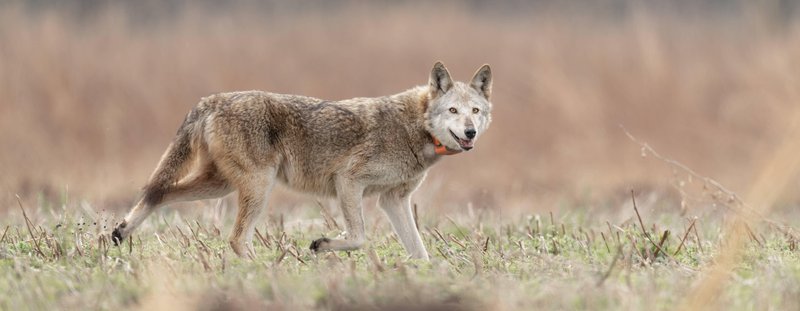
In this article, we’ll break down what wolf worms are, how they affect wild animals, and most importantly, the amazing resilience of these creatures as they recover. Just like a strong tree bending in the wind, many animals have the ability to bounce back from such challenges. So, grab your favorite beverage, and let’s dive into this fascinating topic!
What Are Wolf Worms?
Wolf worms, or *Cuterebra*, are fly larvae that infect various mammals, primarily rodents and rabbits, but they can also invade larger animals like deer and even domestic pets. These tiny invaders start as eggs laid by the adult bot fly, usually in areas where animals frequent. When the eggs hatch, the larvae attach themselves to the host’s skin, burrowing in to grow. It’s a sneaky tactic!
You might be curious about how these creatures affect their hosts. Essentially, as they grow, they can cause discomfort, inflammation, and sometimes even fatal infections. It’s like having a small intruder creating chaos inside your body. Honestly, it sounds pretty horrifying, doesn’t it?
Signs of Infection in Wild Animals
Identifying wolf worm infection isn’t always straightforward, especially in wild animals. These creatures are adept at hiding their pain, but there are some signs you can look for.
- Visible lumps: You might notice swollen areas on the animal’s skin, often around the neck or behind the ears.
- Difficulty breathing: If a larger animal is infected, it may show signs of respiratory distress.
- Behavioral changes: Infected animals may become less active, lethargic, or more reclusive than usual.
Recognizing these signs is crucial. It can make the difference between life and death for the animal. If you spot anything unusual in wild creatures, it’s always best to contact a wildlife rehabilitator or veterinarian who can provide the right help.
How Wild Animals Recover from Wolf Worm Exposure
The recovery process for wild animals after wolf worm exposure can be a long journey, but many species show incredible resilience. Once they receive treatment, they often begin healing fairly quickly. Here’s how the process typically goes.
First, a veterinarian or wildlife rehabilitator will assess the infection. They might use imaging technology to locate the larvae. Once found, they can safely extract the worms. It’s a delicate procedure—we’re talking about creatures living under the skin! After removal, the animal may require antibiotics to prevent infection. Imagine your body reacting positively to the removal of an intruder—the healing process begins right away.
Nutrition also plays a vital role in recovery. Good food fuels the body’s natural healing processes. Wild animals, however, might struggle to eat if they’re unwell, so rehabilitation facilities often provide soft, nutritious diets to ensure they get the nutrients they need to regain strength.
The Importance of Rehabilitation
Rehabilitation is essential for wild animals exposed to wolf worms. These facilities can create safe environments where animals can recover, just like a cozy haven for someone recovering from an illness. Rehabilitation helps in several ways:
1. Expert Care: Trained professionals know the best ways to treat infections and injuries, ensuring the animal gets the appropriate care.
2. Reintroduction to the Wild: After recovery, these animals can often be released back into their natural habitats, restoring local ecosystems.
3. Education and Awareness: Rehabilitation centers often serve as educational hubs, helping the public understand the challenges wildlife faces.
Without these sanctuaries, many animals wouldn’t have a chance to recover from the impacts of wolf worms or other threats.
Challenges in the Recovery Process
Despite the amazing resilience of wild animals, recovery from wolf worm exposure isn’t without its challenges. One significant hurdle is the stress of captivity. For animals used to roaming free, being confined can be traumatic. They might struggle to eat, hide, or even interact with caregivers.
Another obstacle is the risk of infection after removal. Even with antibiotics, there’s a chance that complications can arise. This is especially true in wild animals, whose immune systems may already be compromised.
In addition, there’s the issue of predators. While recovering, these animals are more vulnerable to predation. It’s like being a wounded gazelle in the savannah—there’s danger lurking, and they need to heal quickly to survive.
Preventing Wolf Worm Infections in Wildlife
As we’ve learned, prevention is always better than cure. There are ways to help reduce the risk of wolf worm infections in wild animals.
- Habitat Management: Keeping habitats clean and free from excessive waste can deter adult flies from laying their eggs.
- Monitoring Wildlife Populations: Keeping an eye on local wildlife can help detect any changes in health, allowing for timely intervention if needed.
- Community Involvement: Engaging local communities in wildlife education helps promote awareness about the dangers of parasites like wolf worms.
When everyone pitches in, we can protect our furry friends from unnecessary suffering.
In the grand tapestry of nature, wolf worms might seem like just another thread of chaos, but they play a role in the cycle of life, too. Wild animals can endure incredible struggles and often manage to bounce back, just like a phoenix rising from the ashes. The journey from infection to recovery is a testament to their resilience and resilience is a powerful thing.
By understanding wolf worms and their effects, we can take active steps to protect wild animals in our communities. Whether it’s advocating for better habitat management or supporting rehabilitation centers, we each hold a piece of the puzzle. Together, we can help ensure that the wild remains vibrant and full of life. So next time you spot a wild animal, remember the challenges they face and the strength they possess to overcome them.
